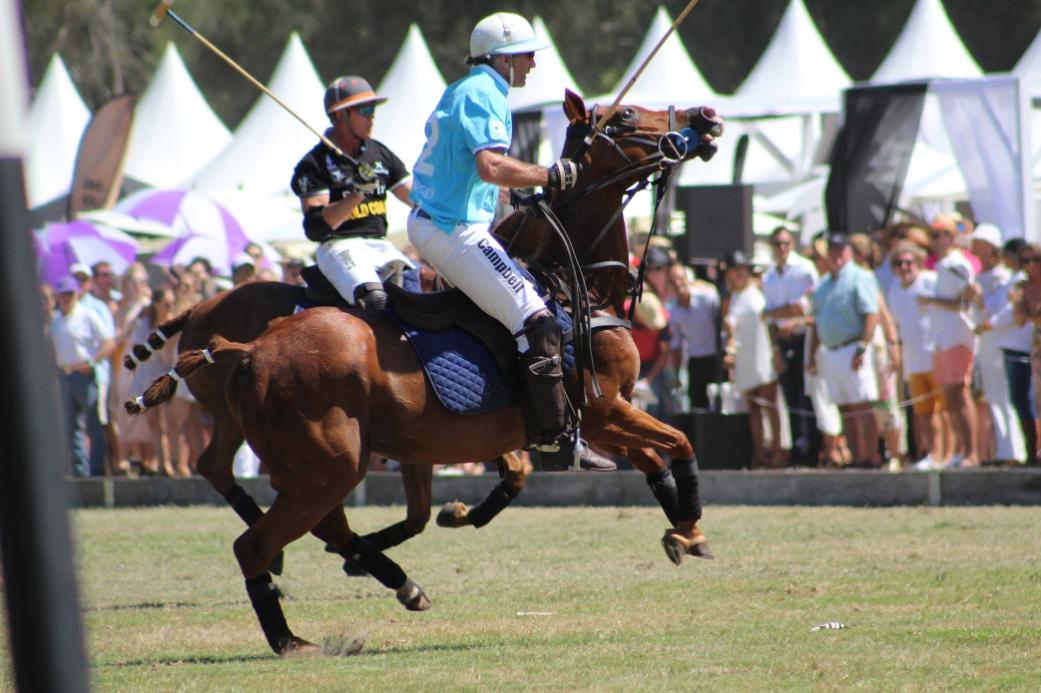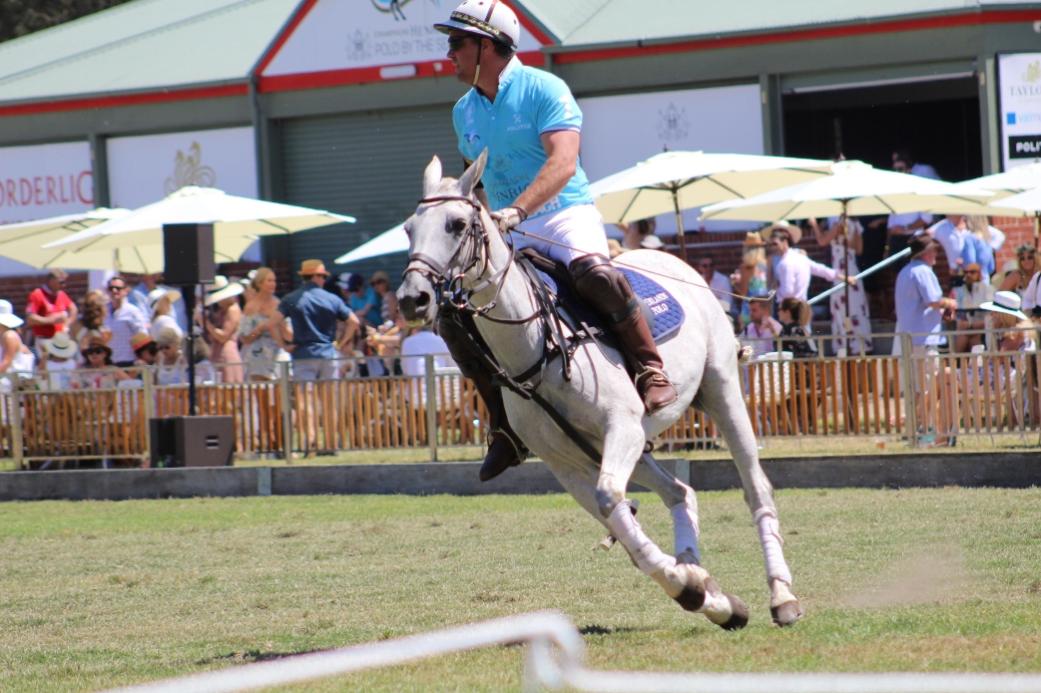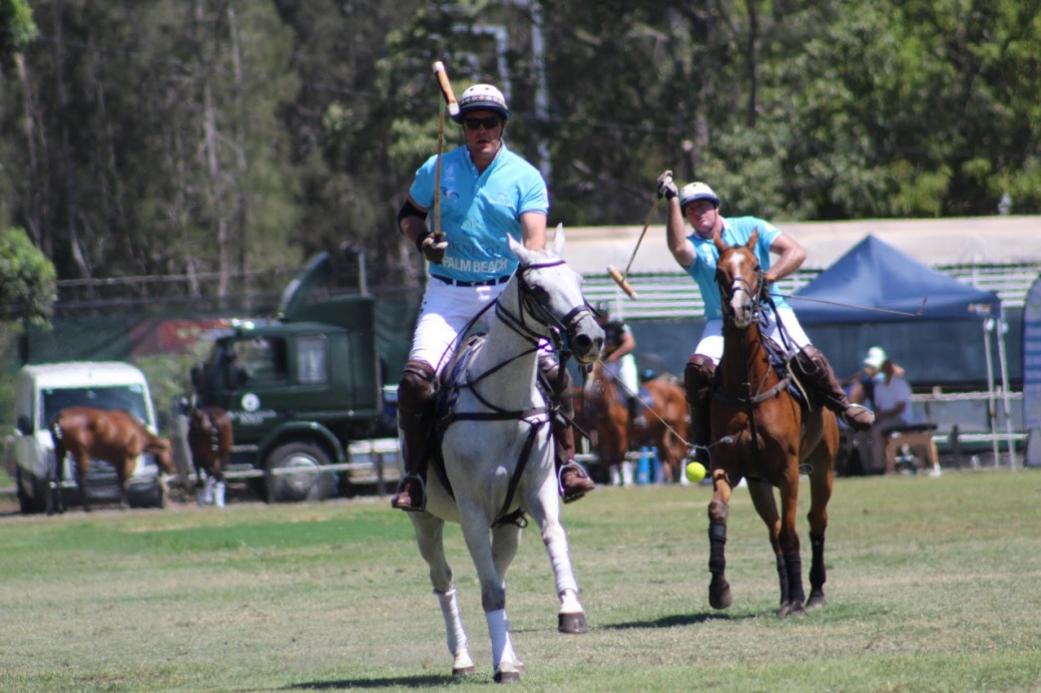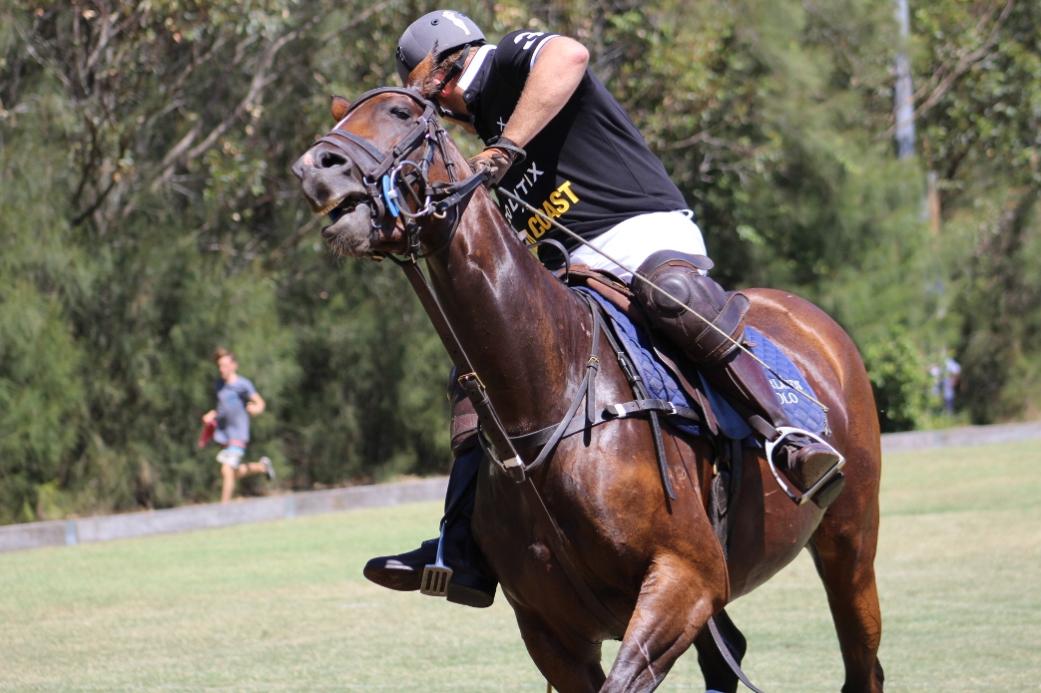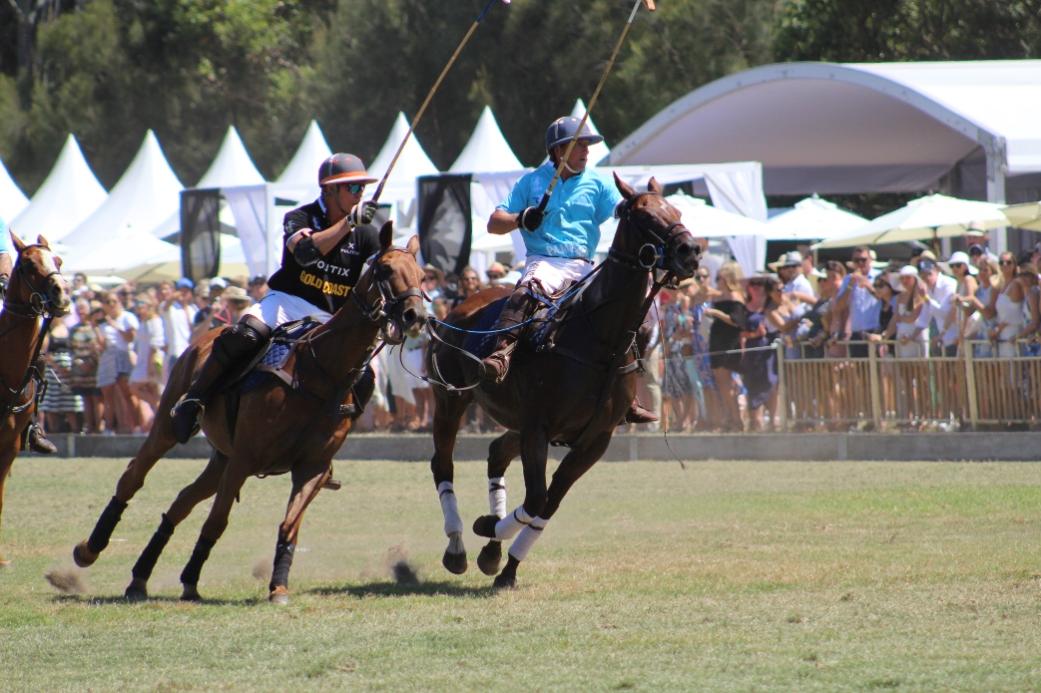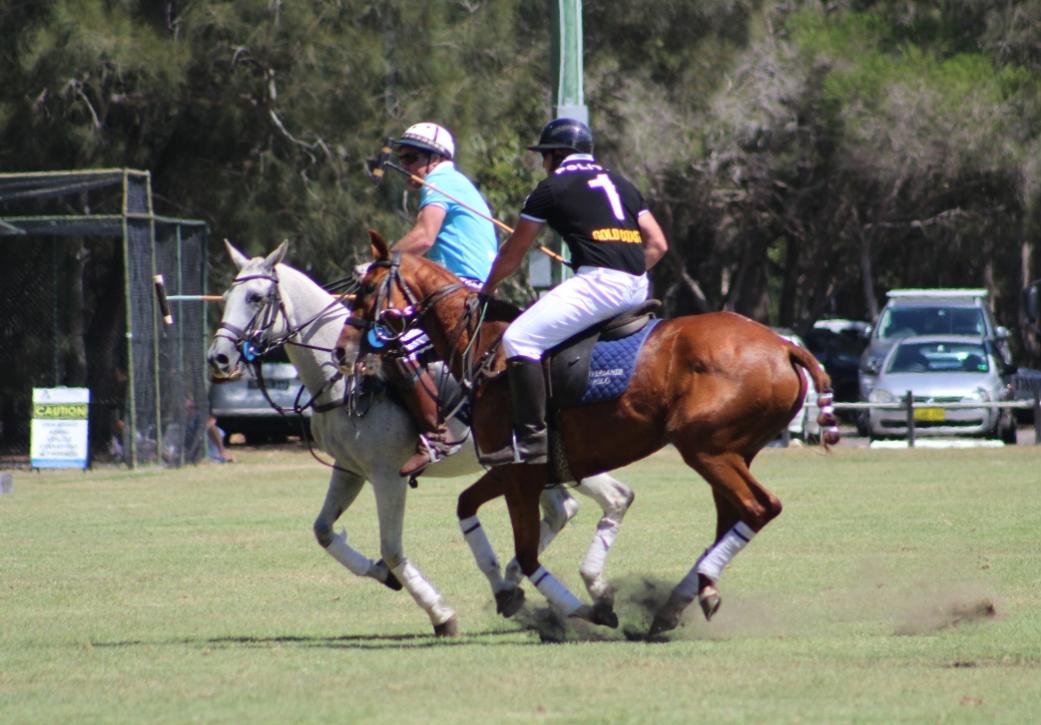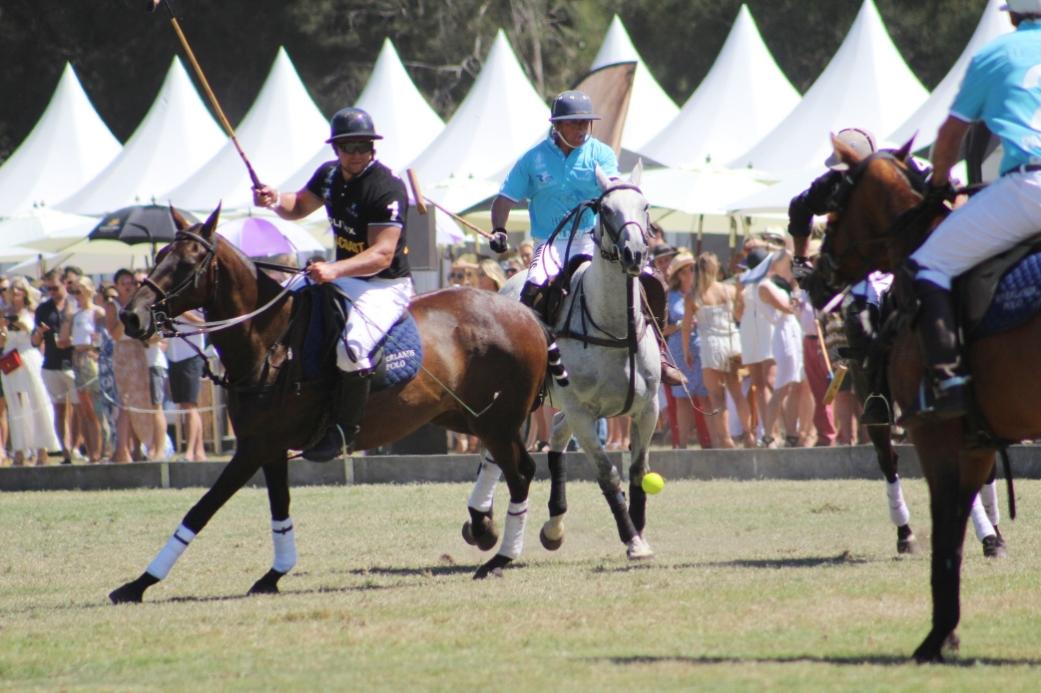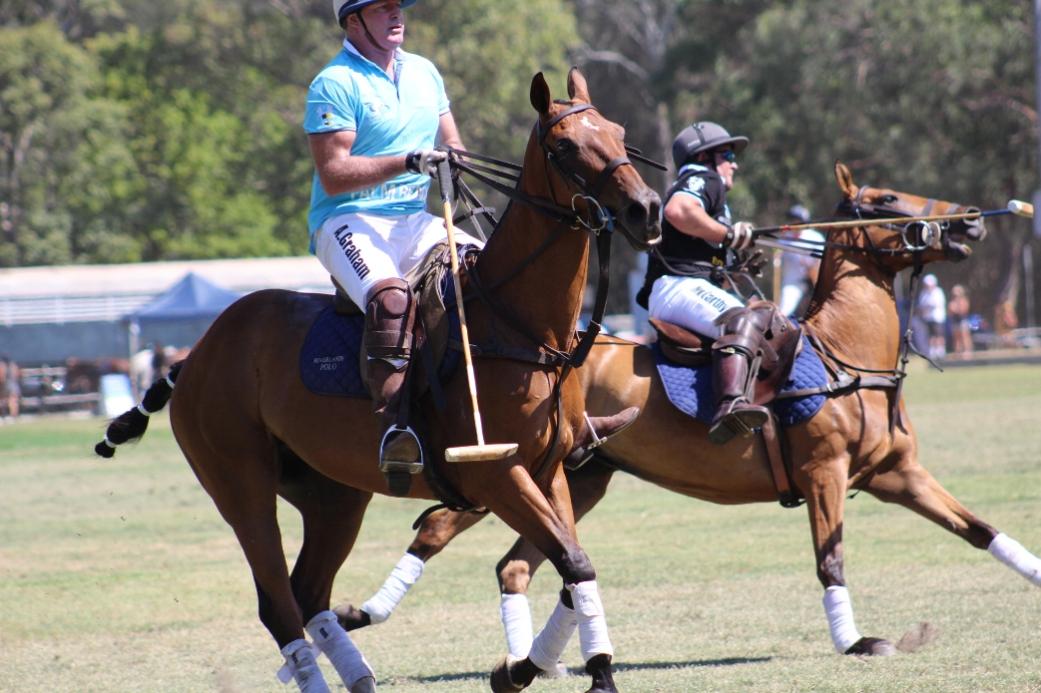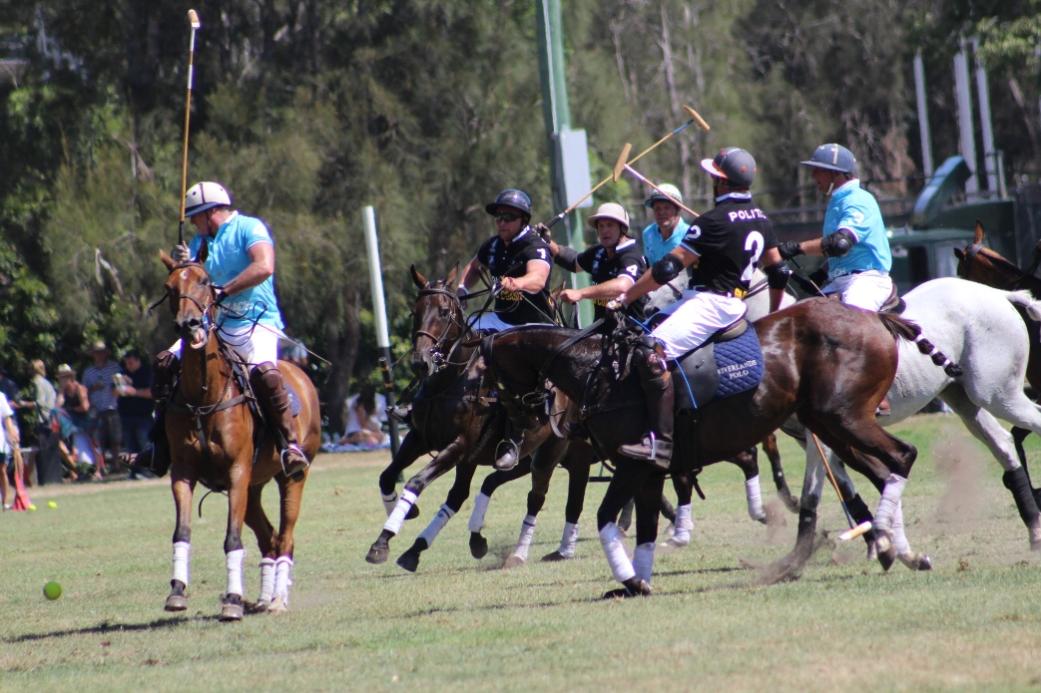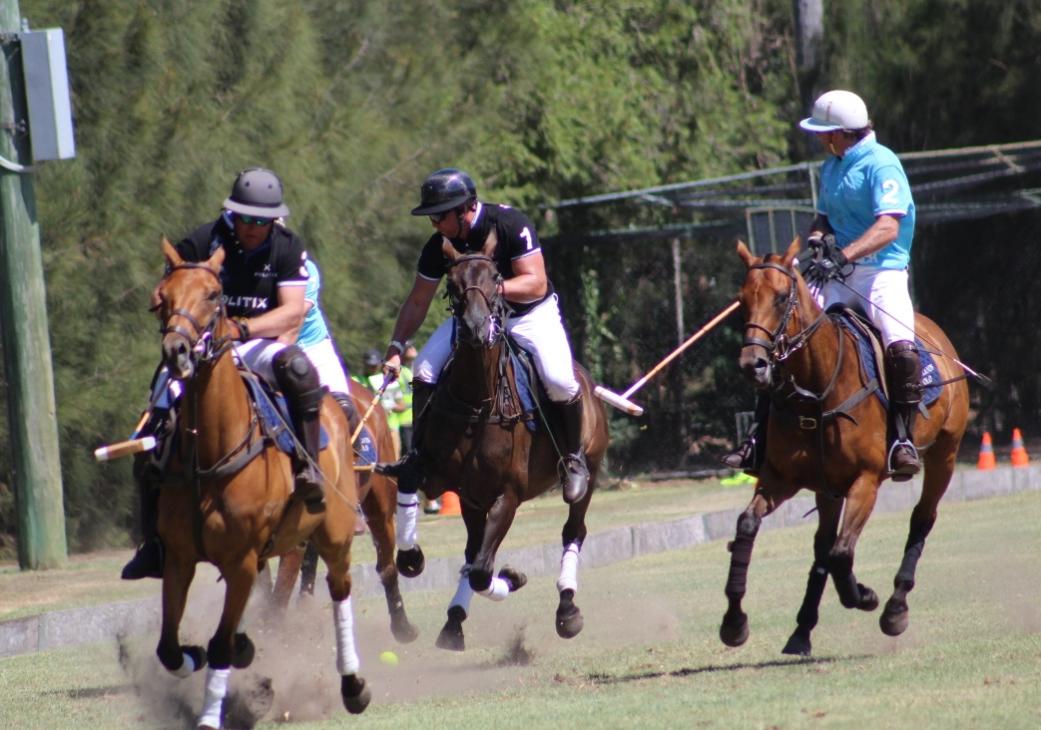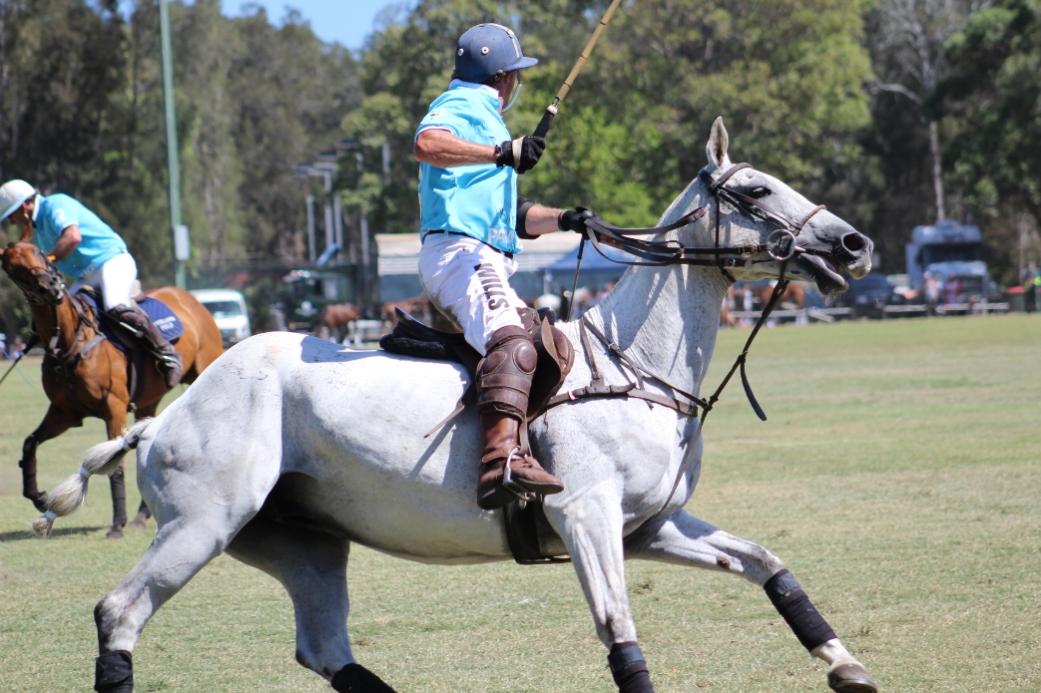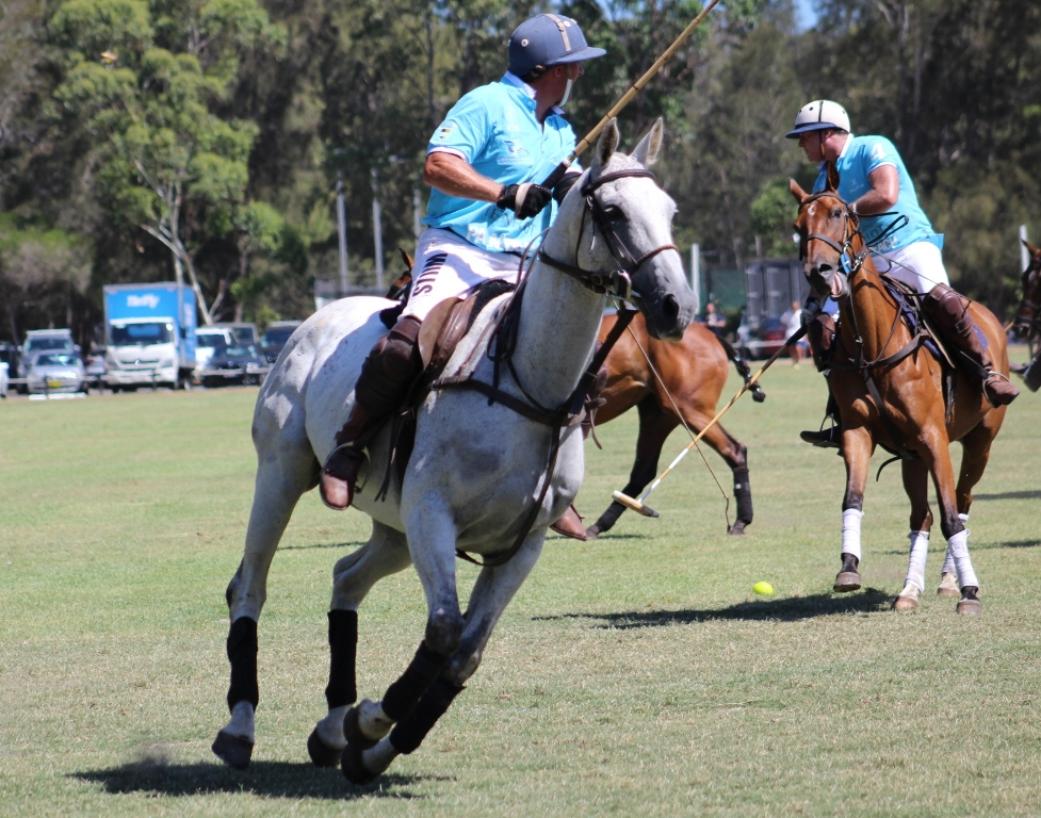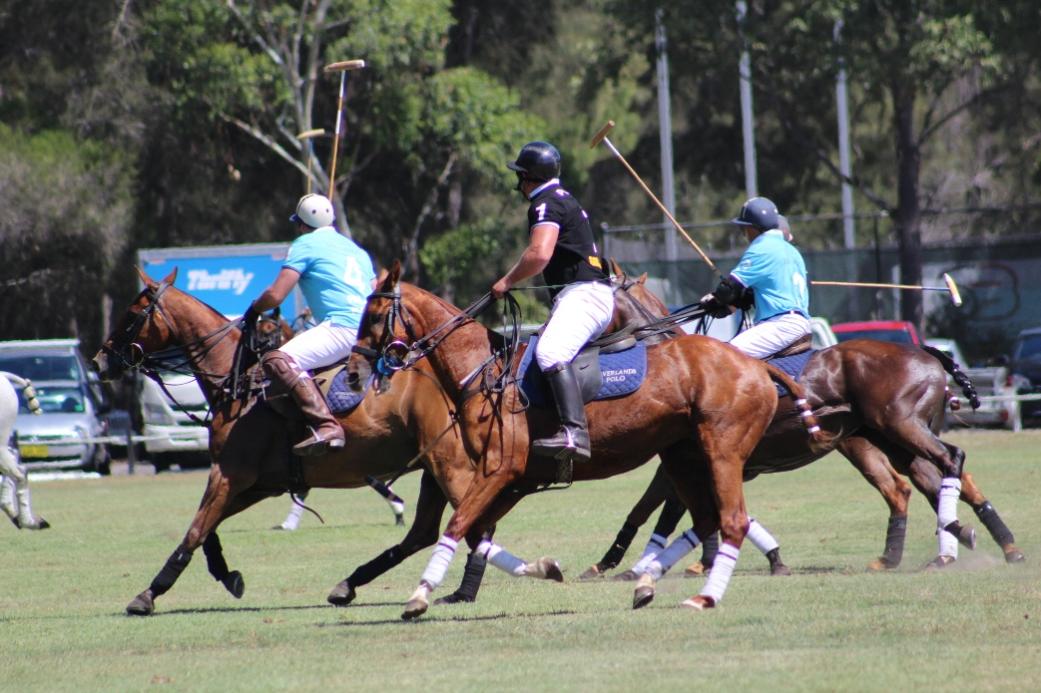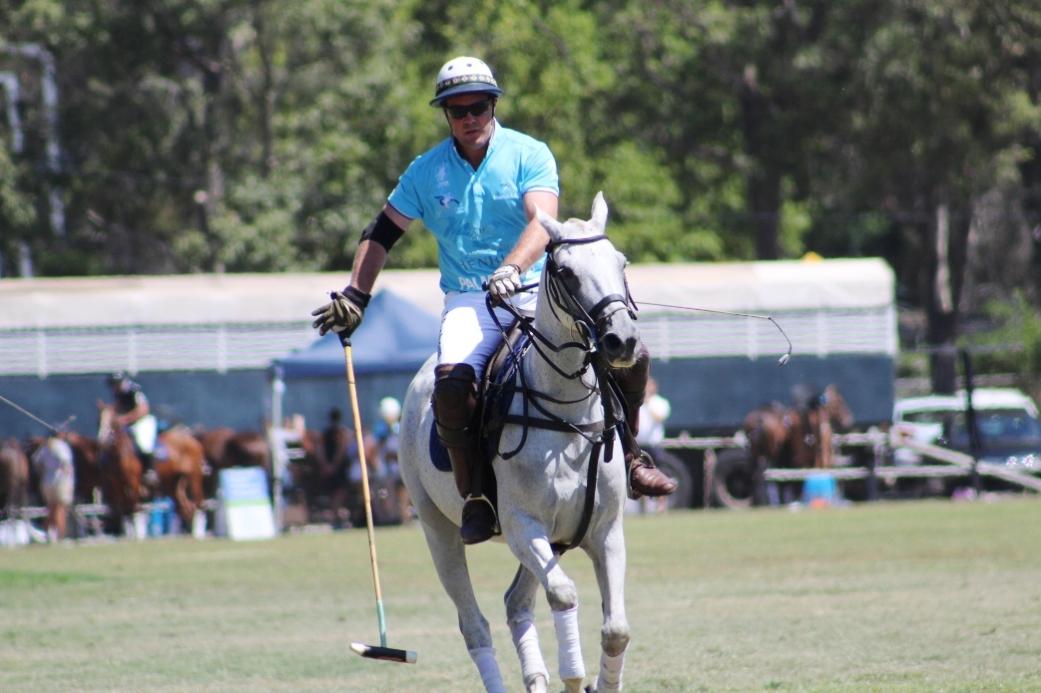January 15 - 21, 2017: Issue 296
Polo By The Sea 2017 Brings Perfect Pony Delight To Palm Beach Youngsters
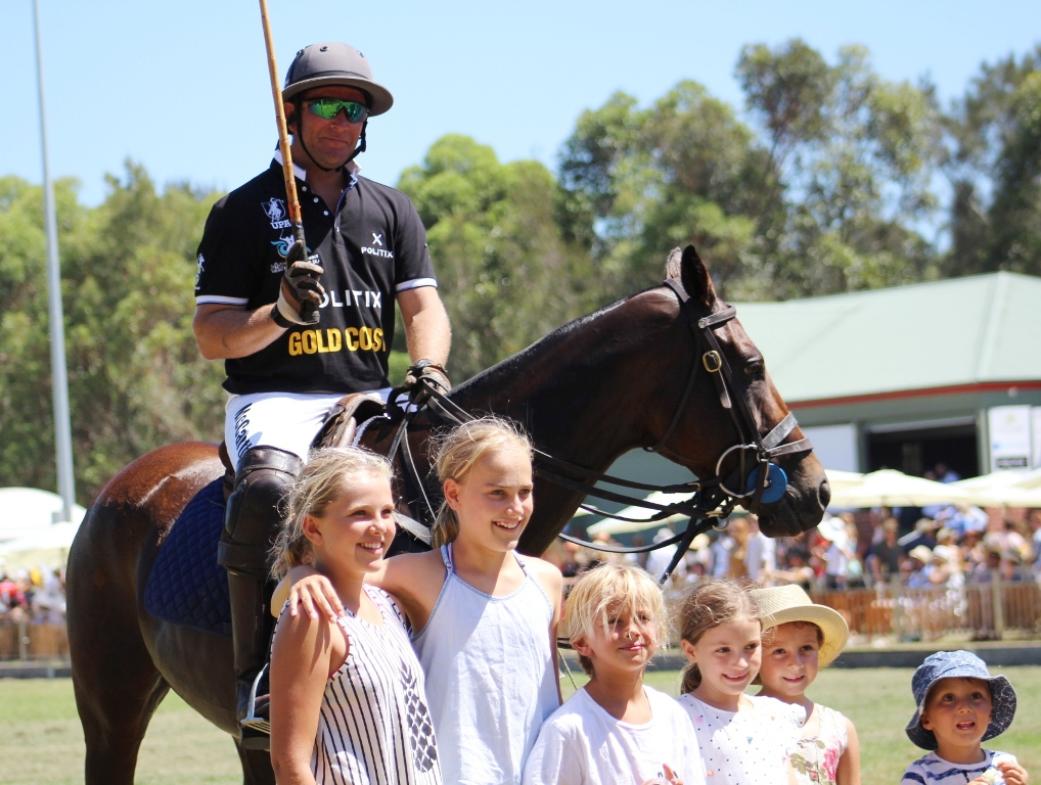
Nic McCarthy of the Gold Coast team kindly poses with delighted girls and boys at yesterday's Polo by The Sea - everybody loves these horses
Polo by the Sea 2017: Palm Beach NSW
On Saturday January 14th those beautiful horses returned to Hitchcock Park, Careel Bay for two spectacular games of Polo.
The first was the Pro-am Challenge with Jordan Lamaison, Luke Rowley, Janek Gazecki, Marty Ingham and Jordan Lamaison on the Taylors Wines team and Jason Varker-Miles, Ferdinand Furch, Ran McGregor and Adam Meally on the Rekorderlig Cider team.
The main match was the National Polo League.
The ‘Palm Beach’ team had Lachlan Graham and Angus Graham, Angus Campbell and Nick Wells doing their utmost to make the residents proud. For the Gold Coast Andrew Fraser-Scott, Lucas Rogers, Ric McCarthy and Luke O'Leary were on the field equally determined to stop them.
Although Pittwater has had a long association with equine creatures historically, and some are still around at Warriewood and Ingleside, polo is a game we don’t get to see too often although there are plenty of adorers of all things horsey. Ergo; many may be interested to know that there are over 20 polo clubs throughout New South Wales. These clubs organise and hold tournaments and events throughout the year which are listed on the NSW Polo Association website.
This NSW Association is responsible for administering polo throughout NSW; promoting the game of polo; arranging a calendar of tournaments and matches; assisting in player development and taking any necessary disciplinary action. It is administered by a Board of Directors who are voted on by club delegates at each Annual General Meeting.
Polo is played in 2 seasons in NSW: Autumn, from March through to end of May and Spring, from August to November.
Find out more at: http://www.nswpolo.com.au/
What many saw yesterday is what is termed Urban Polo, which the Polo by the Sea website explains is a variant of polo first developed with the intention of bringing the sport into the twentieth century and making it more spectator friendly.
From their website:
“Urban Polo has followed a tradition of sporting innovation by developing a variation of polo which is both as exciting to watch as it is to play. It’s defining features include a significantly smaller field (approximately 140m rather than 300m long), which brings the game closer to the spectators, and maximised player reflexes as the smaller field means they are usually closely marked by the opponent.
To account for the smaller field, and maximise spectator safety, the ball has been increased by approximately 10%, and made of a lighter, but solid, plastic composite. This ball poses minimum risk compared to a hard traditional ball and flies a shorter distance, yet maintains a true trajectory, while allowing for an experienced Urban Polo player to curve the ball.
Urban Polo rules, which reflect the unique conditions generated by the new format, have also been codified, and they largely focus on safety to players and horses, rather than technical fouls. In aggregate, the unique Urban Polo format and rules improve the overall spectacle of the sport, with the media comparing the sport to the ‘Twenty20’ of polo.
Urban Polo is now widespread across Australia, with a total of seven events staged annually, under the auspices of ‘Polo by the Sea’ and ‘Polo in the City’, the latter of which began its twelfth year in 2017, and is the world’s largest national polo series of any kind."
You can find out more at: polobythesea.com.au
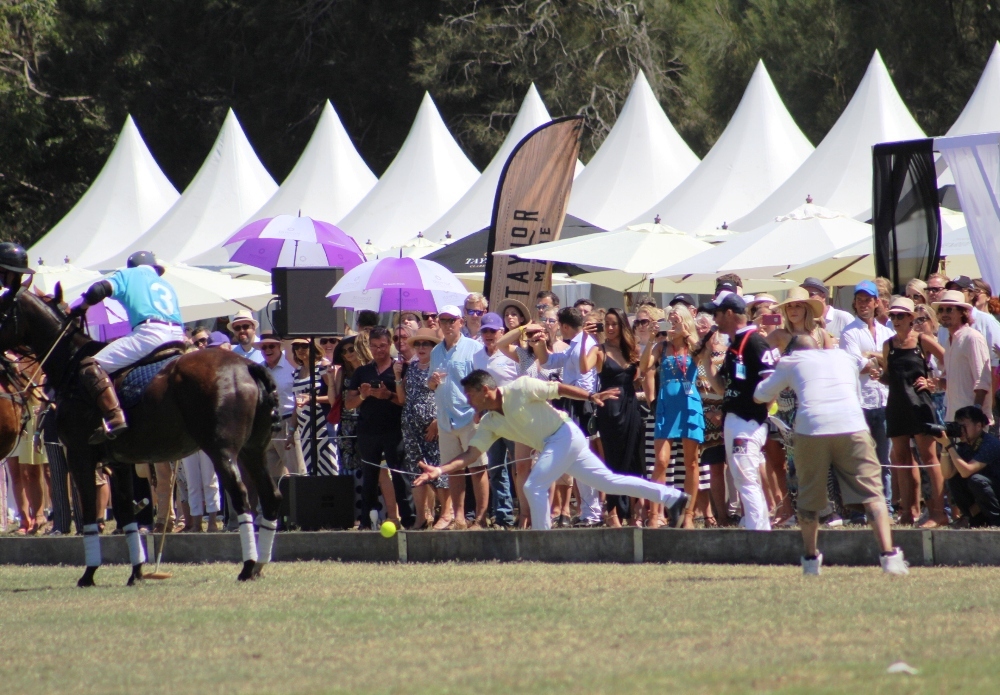
Pittwaterian Jamie Durie sends out the first ball to commence the main event
As you may read above the teams playing in Pittwater this year all had four players. According to the United States Polo Association (USPA), each position assigned to a player has certain responsibilities:
Number One is the most offence-oriented position on the field. The Number One position generally covers the opposing team's Number Four. Number Two has an important role in offence, either running through and scoring themselves, or passing to the Number One and getting in behind them. Defensively, they will cover the opposing team's Number Three, generally the other team's best player. Given the difficulty of this position, it is not uncommon for the best player on the team to play Number Two so long as another strong player is available to play Three. Number Three is the tactical leader and must be a long powerful hitter to feed balls to Number Two and Number One as well as maintaining a solid defence. The best player on the team is usually the Number Three player, usually wielding the highest handicap. Number Four is the primary defence player. They can move anywhere on the field, but they usually try to prevent scoring. The emphasis on defence by the Number Four allows the Number Three to attempt more offensive plays, since they know that they will be covered if they lose the ball.
There’s a fair bit more to this of course, and what we see today is the evolution of something that began, according to some sources, over 2500 years as a means of training cavalry.
It’s not all fun and games though, the 2017 Champagne Henriot Polo by the Sea Program states that hundreds of thousands of dollars for various charities have been raised through the Polo in the City, Polo by the Sea and Polo in the Vines events. Another practice everyone in Pittwater is big on.
Founded by Janek Gazecki, who was on field this year, the first Urban Polo event was staged in Centennial Park in 2005, which also reaches back and echoes of some of the uses that green reserve and its nearby cousin Hyde Park were once put to.
Who won?
The spectators...
Those that went to watch certainly enjoyed themselves – all the littlies, the young and more mature, families and grandparents. Some of the on field action runs below – more in a Pittwater Online News Album HERE - for those who can never get enough of those glorious creatures - the horses.
